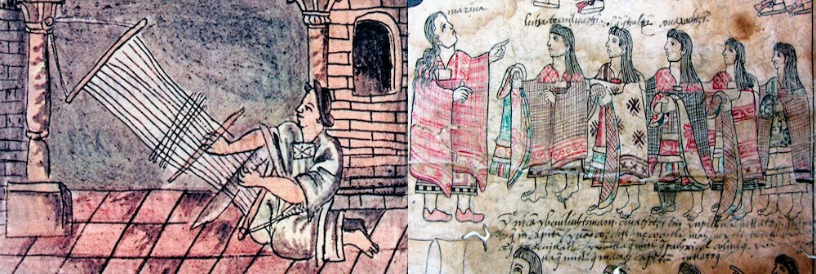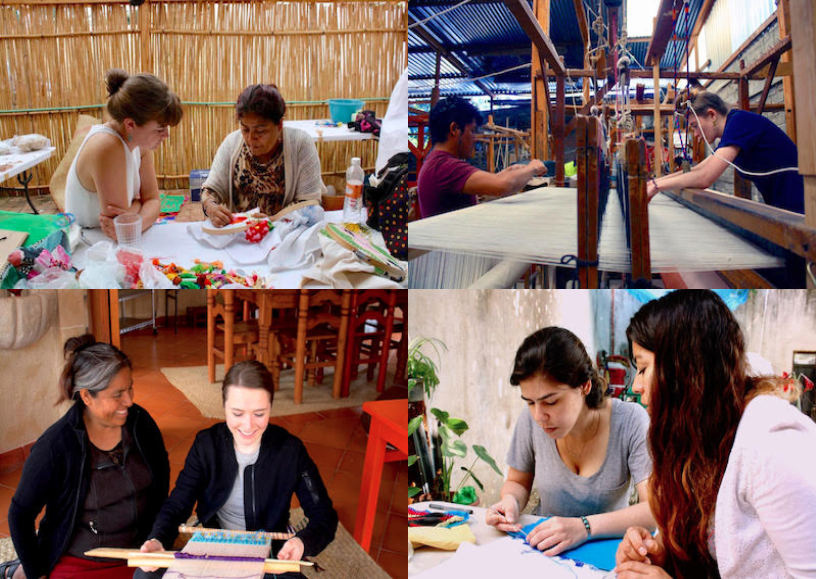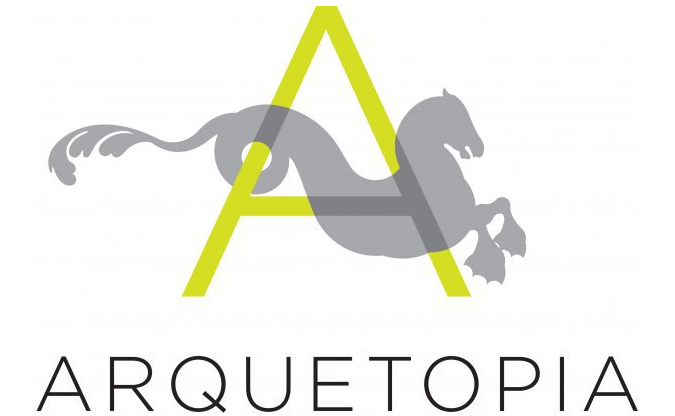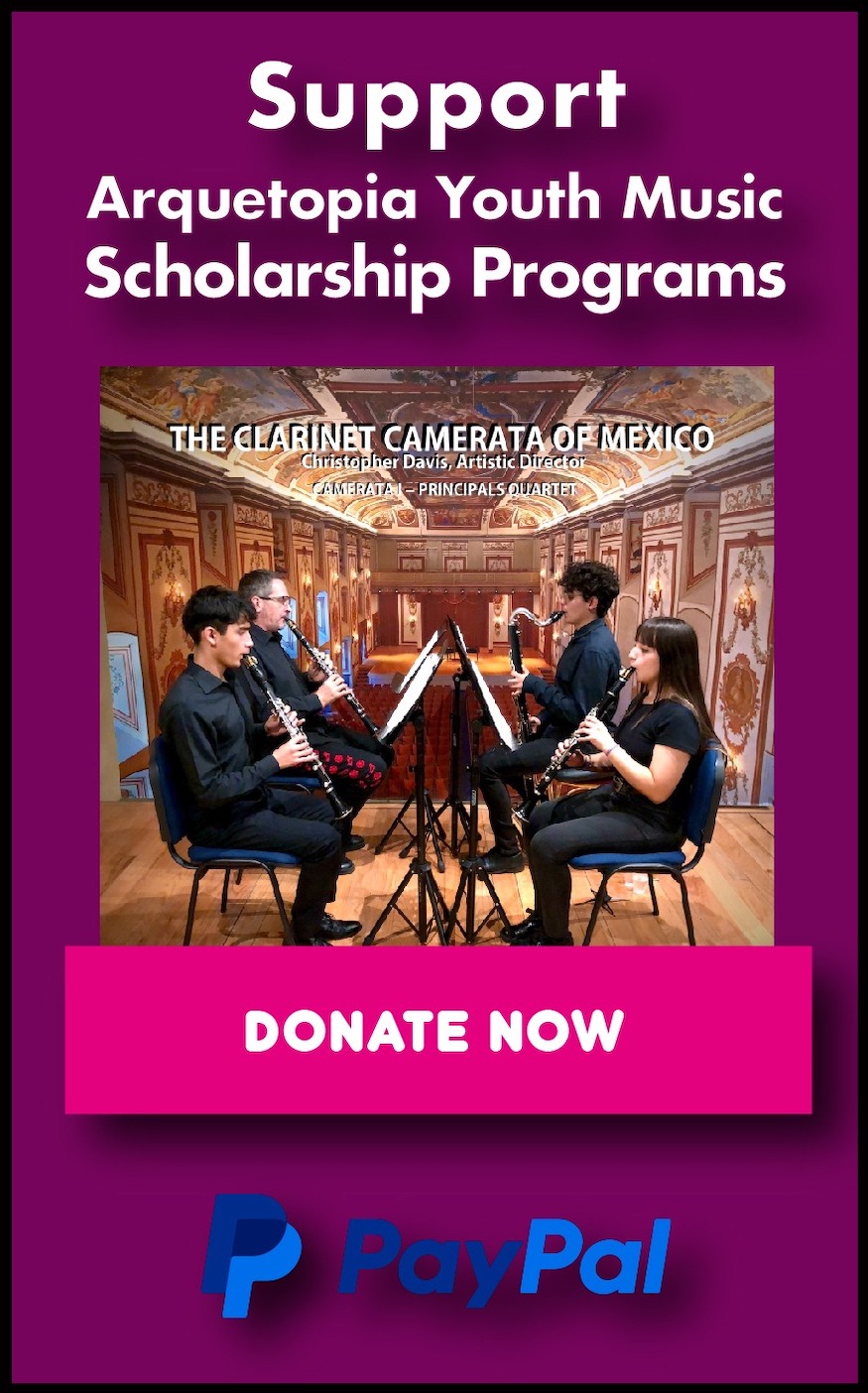The Grammar of Threads:
Mexican Textiles Instructional Programs
Weaving, Embroidery or Tapestry
Arquetopia Location: Oaxaca, Mexico
 Note: These three separate programs focus on master instruction in Mexican textiles. For master instruction in Peruvian (Andean) textiles, we offer the Peruvian Textiles Instructional Program: Andean Weaving in Cusco, Peru. For a (separate) program dedicated to making natural dyes for textiles, we offer the Natural Pigments Instructional Program in Oaxaca, Mexico and Cusco, Peru.
Note: These three separate programs focus on master instruction in Mexican textiles. For master instruction in Peruvian (Andean) textiles, we offer the Peruvian Textiles Instructional Program: Andean Weaving in Cusco, Peru. For a (separate) program dedicated to making natural dyes for textiles, we offer the Natural Pigments Instructional Program in Oaxaca, Mexico and Cusco, Peru.These three comprehensive, customized instructional residency programs offer competitive professional opportunities for emerging and mid-career, national and international artists age 20 and over.
Mexican textiles embody the country’s rich diversity and complex sociocultural systems. Through their narratives, iconographies, and techniques, they reflect a multiplicity of artistic traditions and identities. In Mexico, clothing signals wealth and power, incorporating elements of class and gender differentiation in the performance and negotiation of identities. As a result, the intricate language of textiles reveals a history of contestation and resistance, shaped by the ongoing amalgamation and negotiation between Mesoamerican and European cultures.
Textiles serve as vital records of each community’s cultural patrimony. Both weaving and embroidery are techniques that develop complex narratives and play a significant ideological role in structuring social roles and identity patterns. The very root of the word textile is text, emphasizing how textiles function as woven texts—material inscriptions of knowledge, narratives, and resistance. Through their patterns, symbols, and techniques, textiles become dynamic, living texts in motion, adapting to time, place, and wearer. In Oaxaca, the diversity of textiles is as rich as its natural environment. Each weave and embroidery has followed its own trajectory—some have disappeared or undergone gradual or radical transformation through processes of assimilation and negotiation, while others have evolved into more sophisticated expressions of narrative, technique, and color.
1. The Connectivity of Concepts
The Mexican Textiles Instructional Programs intertwine history, material culture, and artistic practice, fostering a deeper understanding of how textiles are embedded in broader social, political, and historical contexts. Through academic visits and direct engagement with the local context, residents connect the tactile experience of working with fibers, weaving, and embroidery to larger conceptual frameworks, recognizing the histories of resistance, adaptation, and identity negotiation that shape textile traditions in Mexico.
2. The Practice of Unlearning
These programs challenge artists to dismantle preconceived notions about textiles, craftsmanship, and authorship by critically examining the colonial legacies embedded in weaving and embroidery. By interrogating how textile traditions have been appropriated, commodified, and redefined over time, residents engage in a process of unlearning—questioning dominant narratives and reorienting their practice toward a more conscious and nuanced relationship with fibers, techniques, and cultural heritage.
3. The Rhythm of Creating
In these programs, rhythm emerges as a space where artists question labor by weaving together research and intuition to challenge history and expand local knowledge. The hands-on exploration of fibers, weaving techniques, and embroidery traditions encourages residents to engage in a dynamic process where making, questioning, and discovering unfold in constant dialogue. This approach transforms artistic practice into a site of active inquiry, where intuition becomes a method for rethinking narratives, deepening material understanding, and forging new connections between past and present.
4. The Ethics of Movement
Textiles have always been in motion—through trade, migration, and transformation across time. The Mexican Textiles Instructional Programs emphasize the ethics of movement by asking artists to consider the responsibility that comes with engaging with historically rich textile knowledges. Whether through the physical act of weaving, the transmission of knowledge, or the cultural significance of patterns and techniques, participants are invited to reflect on how artistic practice can navigate difference, reciprocity, and responsibility. Additionally, the encounter with the viewer through the work becomes an ethical opportunity to engage with questions, prompting a deeper reflection on how artistic choices shape understanding, challenge narratives, and open spaces for dialogue. In this way, movement—of materials, ideas, and knowledges—remains a site of ethical engagement.
 Aztec Weaver, Florentine Codex Book 10, ca. 1545-1590
Aztec Weaver, Florentine Codex Book 10, ca. 1545-1590
Textiles serve as vital records of each community’s cultural patrimony. Both weaving and embroidery are techniques that develop complex narratives and play a significant ideological role in structuring social roles and identity patterns. The very root of the word textile is text, emphasizing how textiles function as woven texts—material inscriptions of knowledge, narratives, and resistance. Through their patterns, symbols, and techniques, textiles become dynamic, living texts in motion, adapting to time, place, and wearer. In Oaxaca, the diversity of textiles is as rich as its natural environment. Each weave and embroidery has followed its own trajectory—some have disappeared or undergone gradual or radical transformation through processes of assimilation and negotiation, while others have evolved into more sophisticated expressions of narrative, technique, and color.
1. The Connectivity of Concepts
The Mexican Textiles Instructional Programs intertwine history, material culture, and artistic practice, fostering a deeper understanding of how textiles are embedded in broader social, political, and historical contexts. Through academic visits and direct engagement with the local context, residents connect the tactile experience of working with fibers, weaving, and embroidery to larger conceptual frameworks, recognizing the histories of resistance, adaptation, and identity negotiation that shape textile traditions in Mexico.
2. The Practice of Unlearning
These programs challenge artists to dismantle preconceived notions about textiles, craftsmanship, and authorship by critically examining the colonial legacies embedded in weaving and embroidery. By interrogating how textile traditions have been appropriated, commodified, and redefined over time, residents engage in a process of unlearning—questioning dominant narratives and reorienting their practice toward a more conscious and nuanced relationship with fibers, techniques, and cultural heritage.
3. The Rhythm of Creating
In these programs, rhythm emerges as a space where artists question labor by weaving together research and intuition to challenge history and expand local knowledge. The hands-on exploration of fibers, weaving techniques, and embroidery traditions encourages residents to engage in a dynamic process where making, questioning, and discovering unfold in constant dialogue. This approach transforms artistic practice into a site of active inquiry, where intuition becomes a method for rethinking narratives, deepening material understanding, and forging new connections between past and present.
4. The Ethics of Movement
Textiles have always been in motion—through trade, migration, and transformation across time. The Mexican Textiles Instructional Programs emphasize the ethics of movement by asking artists to consider the responsibility that comes with engaging with historically rich textile knowledges. Whether through the physical act of weaving, the transmission of knowledge, or the cultural significance of patterns and techniques, participants are invited to reflect on how artistic practice can navigate difference, reciprocity, and responsibility. Additionally, the encounter with the viewer through the work becomes an ethical opportunity to engage with questions, prompting a deeper reflection on how artistic choices shape understanding, challenge narratives, and open spaces for dialogue. In this way, movement—of materials, ideas, and knowledges—remains a site of ethical engagement.
Lienzo de Tlaxcala, 1585, Fragment in the Benson Library, UT Austin
 Aztec Weaver, Florentine Codex Book 10, ca. 1545-1590
Aztec Weaver, Florentine Codex Book 10, ca. 1545-1590Artists-in-Residence Bella Leonard (UK) and Camille Auclair (UK), Stephanie Gamble (USA), and Samar Hejazi (Palestine/Cnada) with Master Instructors

 Artists-in-Residence and master instructor in technique workshop
Artists-in-Residence and master instructor in technique workshop
The Mexican Textiles Instructional Programs are mentored programs that include instruction from a prominent master artist (27 hours for Weaving or Embroidery, or 36 hours for Tapestry) in Mexican textile techniques. Resident artists learn how to use the backstrap loom, including assembly and basic weaving techniques; or they study Mexican embroidery techniques such as cross-stitching, chain-stitching, shading, and pepenado hilván; or they explore tapestry techniques using a large floor loom. Each technique is offered separately. Instruction is in Spanish, but residents do not need to speak Spanish to successfully complete the course. Artists wishing to learn multiple techniques may apply for consecutive programs. Individualized mentoring is provided by our directorial and curatorial staff, offering critique, research and projectguidance. Participants also have the opportunity to work independently in our spaces.
With three separate programs to choose from, traditional Weaving, Embroidery, or Tapestry, artists join an integral program in which they learn the technique, approach iconography and traditional textile production systems with more resources, and get a better understanding of Mexican culture.
PROGRAM DURATION / TIME PERIOD
Weaving or Embroidery: Sessions are 3 weeks, with option to extend for 1 more week of continued production as a standard Art, Design or Photography Program.
Tapestry: Sessions are 4 weeks (fixed).
For each of these separate programs, dates are not predetermined but are proposed by the applying artist.
Tapestry: Sessions are 4 weeks (fixed).
For each of these separate programs, dates are not predetermined but are proposed by the applying artist.
WHAT THESE COMPREHENSIVE INSTRUCTIONAL PROGRAMS INCLUDE
Technique Instruction:
- Weaving or Embroidery includes 27 hours master instruction, at 9 hours per week
- Tapestry includes 36 hours master instruction, at 9 hours per week
- A weekly meeting with our directorial and curatorial staff for personalized mentoring, research assistance, project guidance, and critique
- Furnished, private bedroom
- 24-hour access to the kitchen for participants to prepare their own meals; meals/food are the participant’s responsibility
- Wireless Internet
- Use of Arquetopia’s common spaces
- Shared, serviced (single) bathrooms with modern fixtures and showers
- Housekeeping
- Downtown arrival pickup and departure dropoff transportation provided
- Affordable, everyday public transportation is available from the program vicinity into the city. Participants receive an orientation regarding the local transportation system upon arrival
Studio Workspace and Materials:
- 24-hour access to shared studio with natural light
- Personal workspace with a large table
- Some tools provided
- Materials and supplies for the instructional course provided
- Materials and supplies for extended project production not included but available for purchase locally
PROGRAM TUITION INFO & APPLICATION DEADLINES
E-mail This email address is being protected from spambots. You need JavaScript enabled to view it. for program tuition info and application deadlines for these (separate) programs.









